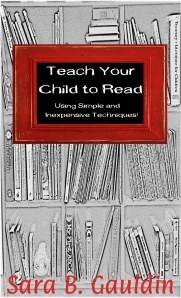Teach Your Child to Read: What about those vowels that say their names?
Long vowel sounds are tricky for early readers. Most children are not ready to tackle them until they are reading at the end of first grade level to the beginning of second grade level. The first stop in understanding the sounds long vowels make is tracking down the illusive silent “e”. I tell my students a little story to help them understand about silent “e”. It goes like this:
Once at letter school all the letters went out to play on the playground. They had a big class and the playground was huge. There were benches for any letter that got tired or just wanted to talk. The letters k, i, and t sat down first, all in a row. They looked like this kit. I ask the students to help me sound out the word kit. After a while the letter e came and sat on the end of the bench. Now they looked like this kite. Sometimes e does not play well with others. He is sneaky and quiet. This time e sat down so quietly that nobody heard his sound. When nobody was looking he stuck out his foot under the bench, and kicked poor i; i was so surprised that he yelled out his own name instead of his sound. Nobody heard e at all.
I usually draw the foot kicking the letter and a speech bubble with the letter name. I repeat the drawing with other combinations. I always have them read the word with the short vowel sound, and then add the e to change the word that is created.
When teaching a child about long vowels it is best to tackle one vowel at a time. You may begin with long a as in cake or late. You can focus on long i as in kite or time. You can teach long o as in rope or nose. I usually save long u for last. Long u can make two sounds, u can save its name as in use, but more often it says oo as in mule. I skip long e entirely at this point. Long e does not typically follow the vowel-consonant-vowel-silent e pattern.
As each long vowel with silent e pattern is introduced it is best to compare the words to the short vowel sound made by the same letter. A child should have a good understanding of these patterns before attempting to compare long vowel patterns to one another.
Try This
Use word sorts to reinforce the long vowel sound compared to the short vowel sound. Like the other sorts discussed, go over the featured sounds and review with the child how the sounds change when the letter e is added to a word. Go over each word on the sort before attempting to cut the words apart. Help your child place the headers at the top of each column. Help your child to say each word before he or she lays the word under the correct heading. As your child progresses with their sorting accuracy you may try other techniques with the sort including blind sorts, timed sorts, and writing sorts.
Word Sort using word families with long a with silent e: http://www.teacherspayteachers.com/Product/Word-Sort-Long-a-silent-e-ake-ate-ave-465334
Word Sort Comparing short a to long a with silent e: http://www.teacherspayteachers.com/Product/Word-Sort-Short-a-compared-to-Long-a-465517
Word Sort using word families with long i with silent e: http://www.teacherspayteachers.com/Product/Word-Sort-Iong-i_e-word-families-ike-ide-ine-465773
Word Sort using word families with long o with silent e: http://www.teacherspayteachers.com/Product/Word-Sort-Long-o_e-families-ome-ose-one-472188
Use blending chunks to form words using set letters with the ability to move from short to long vowel sounds. Blending chunks are more useful as your child progresses to longer and more involved words. It becomes impractical to use single letters or push and say it letters after the introduction of blends. The blending chunks can be used in much the same way. Ask your child to find a beginning sound. When they identify the letter or blend that makes the sound they move it to the side. Then have them find the vowel by the short vowel sound. Add the ending sound. If the vowel will be made long by a final e, have them add it, then show how it changes the word from a nonsense word to a real word with a long vowel sound. Later you have the option to add endings to change the words tense or to make it plural. I recommend looking over the blends and making a list of the words you will use before you try the activity. Also, it is useful to progress with a degree of order so that the child can replace a few sounds at time rather than constructing each word in its entirety.
Short a compared to long a blending chunks: http://www.teacherspayteachers.com/Product/Phonics-Blending-Chunks-featuring-long-a_e-compared-to-short-a-465546
Short i compared to long i blending chunks: http://www.teacherspayteachers.com/Product/Word-Sort-short-i-compared-to-long-i-with-silent-e-465686
Short o compared to long o blending chunks: http://www.teacherspayteachers.com/Product/Phonics-Blending-Chunks-featuring-Short-o-Long-o_e-472279
As with any reading skill, at this point the key to improving reading is to apply the skill authentically while reading. Choose literature that offers some of the sounds or features your child is learning. Guide him or her to echo, the chorally read the book. Find the feature in the text. At this point it is critical for children to read aloud to an adult on a regular basis. It is tempting for busy grownups to ask a child to read on their own. This is not practical or good practice at this level of instruction.






